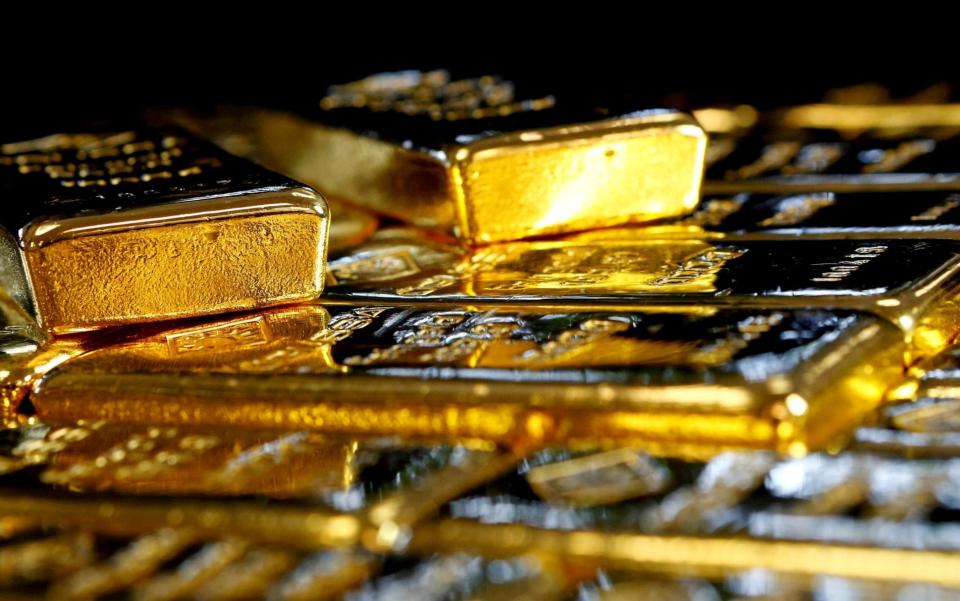Gold has let us down so far but the price will rise soon – and so will this miner

One of the surprises of this sudden period of high inflation is that the gold price has not shot up. Gold is, after all, the traditional safe haven in such times. But even if investors remain lukewarm about its inflation-busting credentials there are good reasons to expect its price to rise in the coming years.
Simply put, supply is all but certain to fall and demand is likely to rise.
The extra demand will come from the central banks of certain countries around the world that have seen how Russia’s dollar holdings have been subject to sanctions and decide to invest instead in an asset that they can keep in their own vaults and has no “counterparty”. This is the view of James de Uphaugh of Edinburgh investment trust, which has a stake in Newmont, the New York-listed gold miner.
Supply, meanwhile, is under pressure. “The main reason is that gold is getting harder to find,” says de Uphaugh. “If you want to develop a new gold mine it’s not obvious where to go.”
All the places where gold can be taken from the ground easily have long been exhausted. Whereas once it could be found on the surface, now ever deeper mines are required. Mining companies have also lost their appetite for “prospecting” – searching for entirely new sources – and instead now concentrate on getting all the gold they can out of existing mines, de Uphaugh says.
“Searching for new mines is the glamorous side of the business and the previous generation of mining executives, their heads no doubt full of images from cowboy films, did just that. They sought to make their company the biggest by spending fortunes on seeking new sources or by buying rivals. This, of course, came at the expense of profitability.”
When that bubble burst a decade or so ago, those executives were fired and their replacements took a more hard-headed approach focused on profitability and cutting risk and debt.
“Gold miners are now run by people with discipline, who are not gung ho but run their business in a systematised way. They have stricter financial criteria for going ahead with new projects,” de Uphaugh says.
While this is making mining more profitable, it does mean that fewer new sources of supply are being found. “Production from existing gold mines is forecast to halve in the next 10 years,” he says. Even under the most optimistic estimates of supply from potential new sources, global output falls by a third between now and 2029.
Newmont is also making its operations more efficient. Gold mining has been slower to be automated than the extraction of other minerals found further below the surface but the company has introduced autonomous haulage at its Boddington mine in Australia and is in partnership with Caterpillar to create the industry’s first fully autonomous, electric, zero-carbon mining system.
It expects its cost of extraction to fall from about $1,040 an ounce last year to about $950 by 2026. While this forecast is based on the assumption that inflation is brought under control within a couple of years, the company is taking steps to insulate itself from rising prices by, for example, installing solar panels for its mines’ energy needs. This is especially effective because gold mines are normally found in empty areas that enjoy lots of sun.
De Uphaugh adds: “Newmont currently has a free cash flow yield of 5pc, a large proportion of which should go back to shareholders. It pays a base dividend of $1 a share and tops it up whenever the gold price is more than $1,200. Over time its costs should fall so free cash flow should increase. But I also don’t expect the gold price to stay flat because production is falling.
“Gold is also an insurance policy against strange things happening in the economy – shares in gold miners are among the few stocks to do well in periods of stagflation. Recently people have wondered whether gold’s status as a store of value would be usurped by cryptocurrencies but it has a 2,000-year record and has weathered whatever circumstances could throw at it. Bitcoin has only been around in a period of mass money printing.”
In view of this column’s belief that the dollar is another safe haven, dollar-denominated shares in a company that produces a scarce, dollar-denominated commodity look a good bet.
Questor says: buy
Ticker: NYSE: NEM
Share price at close: $65.17
Read the latest Questor column on telegraph.co.uk every Sunday, Tuesday, Wednesday, Thursday and Friday from 5am.
Read Questor’s rules of investment before you follow our tips.

 Yahoo Finance
Yahoo Finance 